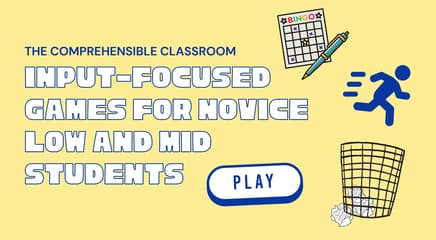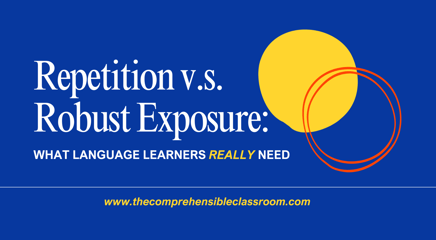Can you believe that I didn't realize what a glyph was until last year? I mean, I had been using them, I just didn't know what they were called. I kept seeing the word 'glyph' on Pinterest and ignoring it because it sounded like something I wouldn't like. Some kind of a really intense reading test or something that would be really boring and pointless for students but really great for creating data to gather. When I finally put 2 and 2 together, I felt a lot better about so many teachers bubbling over about their glyph activities.
What is a glyph?
A glyph is a pictograph.
There, doesn't that make it feel less data-rrific? ;-) As I have used them, glyphs are images (outlines only) that students color in according to a 'key' of sorts. Each component of the image can be colored one of two or more colors, and students determine which color to fill in that component of the image with based on the key.
For example, check out this glyph in English:

Students have a 'key' (the text on the left) that explains to them how to color the picture (on the right). In this example, there is no right or wrong answer for any given question in the key--the finished glyph will be an expression of the student's preferences. In some cases, however, your key might be a list of questions that have correct and incorrect answers, and so your glyph becomes evidence of understanding--an assessment.
If you want to use an image that doesn't have unique components (ex: hat, pants, shirt, etc.), number each segment of the image. Then, write in your key "Color Petal 1 purple if...":

Why use glyphs in language classes?
Glyphs are a great stress reliever.
Who doesn't feel more relaxed after coloring something? When you add a glyph component to a typical Q&A activity, it will take longer for students to complete it, and it will relax them. You have to weigh the cost (time) against the benefit (relieving stress) to decide whether or not it is worth it to use glyph. I didn't use them often, but I did use them regularly. They were especially nice on testing days or other times that I knew that students would be coming to class with extra mental and emotional tension.
Glyphs allow students to express without producing language.
For this reason, they are GREAT for emergent speakers. There are multiple ways that students can express meaning without actually speaking (thumbs up/thumbs down, moving to certain areas of the room, drawing a sketch, voting with tally marks/post-it notes, etc.), and glyphs are one of them. Looking at the example above (the picture of the guy with the lollipop), students are able to 'say' a lot about themselves without uttering a single word. It is easy to show a completed glyph to the class and ask questions about it in order to discuss the subject student's personal responses. For example, "Does Billy like football or soccer better?" "Look! The hat is blue. Billy likes soccer better than football!" (of course you can still confirm with the student--"Billy, do you like soccer better than football?").
Glyphs are a sneaky way to use dull vocabulary.
By dull, I just mean 'not super useful'. Do you have a textbook unit about something that you would never actually talk about in real life? Perhaps a foot unit that requires students to memorize words like 'peas', 'fork', 'rice', 'bowl', etc.? Create a glyph with pictures of the words that you know you are not going to use in class very often. Then, create a key that asks questions about things that students might actually care about or be interested in. For example, "Would you like to eat ice cream/have coffee with Beyoncé or with Adele? If you'd rather have coffee with Beyoncé, color the peas pink. If you'd rather have coffee with Adele, color the peas blue." The prompt need not have anything to do with the actual image.
Glyphs make any assessment less intimidating.
I like using glyphs on assessments. When I do, I have to create several versions of the glyph. Even still, I prefer to use glyphs on formative assessments, not summative assessments--although I have very occasionally used them on summative assessments. If coloring is involved, the assessment seems much less assessment-like and therefore is much less stressful for my students with test anxiety. Instead of asking personalized questions, assign a color to each possible answer for each question. If it's a true/false question, assign a color for true and a color for false. If it's a multiple-choice question, assign a color for each of the choices. If it is for a summative assessment, make sure that there is ZERO possibility that students could miss an answer because they didn't know their colors. Post a color key (red-rojo, blue-azul, etc.) in the room somewhere, or give the coloring commands in English:
"El Cinco de Mayo es el aniversario de la Batalla de Puebla"
CIERTO/TRUE: Color the "O" red.
FALSO/FALSE: Color the "O" blue.
I'd love to hear about your experiences using glyphs in class! What have you done? What tips and tricks do you have for successful implementation?
The glyphs in the above image are from two of my lesson plans:
- In the Mexico/Olé glyph, students read a simple text in Spanish about the historical significance of El Cinco de Mayo and then choose which statement in each row is true (based on the reading) and color it accordingly.
- In the Caminante glyph, students embark on a fake Camino de Santiago around their school. During the Camino, they are faced with various challenges and have to choose between two possible responses to each challenge. They color each segment of the Camino de Santiago symbol accordingly.





